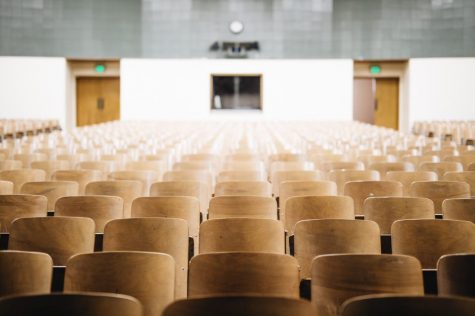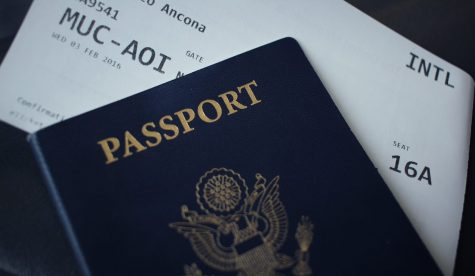COVID-19 and Teaching
How has teaching changed because of COVID-19?
November 23, 2020
COVID-19 has impacted our community in more than one way. The University of North Dakota has been taking steps to keep the students and staff safe during this time. In doing so, teaching has changed to ensure everyone is kept safe. Through an email, Amy Kielmeyer, a Graduate Teaching Assistant in the English department at UND discussed how teaching has changed for her.
“The biggest change was in how I conceive of the classroom and the purpose of the work being done in the classroom, and how I think about student participation,” Kielmeyer said. “I teach writing, so the classes have always functioned like a lab; students read and write mostly outside of class, and then they come to class and we talk about what they read and they revise what they’ve written.”
Kielmeyer explained how participation in the classroom has changed since making the shift to teaching online.
“Before, it was coming to class, contributing to class discussions, doing the in-class activities, and at least looking alert and engaged,” Kielmeyer said. “I tried to encourage that by emphasizing responsibility to each other in the classroom. Now, I’ve offered a multitude of ways of participating in class that are built-in to the assignments, so that every student is getting some experience doing every kind of participation I can think of, but I’ve weighted them all the same and instead emphasized reflective writing assignments. I’m still working on how to also be able to prioritize the responsibility to each other, but with wildly different working conditions, it doesn’t feel fair to make that a fundamental component to the course. It’s still there, and in some assignments more than others, but it’s something I’m still thinking about.”
Kielmeyer explained being flexible has played a big role in having positive responses from her students.
“So far, students have responded really well.” Kielmeyer said. “They are doing the work and trying their best, and they are being really flexible. The more I tell them why I am asking them to do something, the better they are able to get on board, and that’s always been the case. I think it helps that I’ve been flexible with them in return, and am constantly reminding them that most important part, to me, is that they learn things about writing, and I have been willing to let them show and tell me what they’ve learned in a variety of ways.”
When asked how teaching now compares to teaching in the past, Kielmeyer explained that she misses the in-personal interaction but thinks it’s best to teach at a distance for multiple reasons.
“Personally, the being together and learning at the same time is still my favorite part, so it’s been difficult to have to deprioritize that, but I also know it has to happen, at least a little bit.” Kielmeyer said.
There are advantages and disadvantages to teaching online. One popular debate when teaching online is the camera on-off requirement. Kielmeyer explained her thoughts on the debate.
“When we started the synchronous plan, the most interesting part to me was thinking about the cameras on, cameras off debate.” Kielmeyer said. “Teachers everywhere were talking about it, and I landed pretty quickly on the side of those saying students never agreed to have to display their homes and workspace to their classmates, so I do not require it.”
When the cameras are turned off, students’ privacy is respected. There are some challenges to teaching in a classroom with the cameras turned off.
“At the same time, I know it’s better for me when their cameras are on; I can see their faces and adjust what I’m saying and how I’m saying it based on their body language and facial expressions.” Kielmeyer said. “The reality is, I don’t need to know if they are there or paying attention, and I don’t need to see their faces to know if I’m being confusing, vague, unclear, or boring. If I’m bored, they’re bored. If I can’t figure out what I just said, I’d better just say it again in another way. I miss nodding. I miss nodding a lot, but the only real benefit was validation that they were with me.”
When asked about one thing that individuals should know, Kielmeyer explained that every teaching style has weaknesses, but having goals for students helps find accommodations for their learning.
“There are limitations to all kinds of teaching scenarios, and they are important to be aware of, so this is no different.” Kielmeyer said. “If we know the learning goals of our courses, even if we have to change them some to accommodate, we can find ways to make them possible for students to reach. Just like always, we have to assume and that students are committed to learning.”
For those with questions or concerns with UND’s learning environment contact Student Rights & Responsibilities Services at 701.777.2664 or [email protected].
For those struggling during this stressful time, the UND Counseling Center can be contacted at 701.777.2127.
Brianna Mayhair is a Dakota Student News Editor. She can be reached at [email protected]












